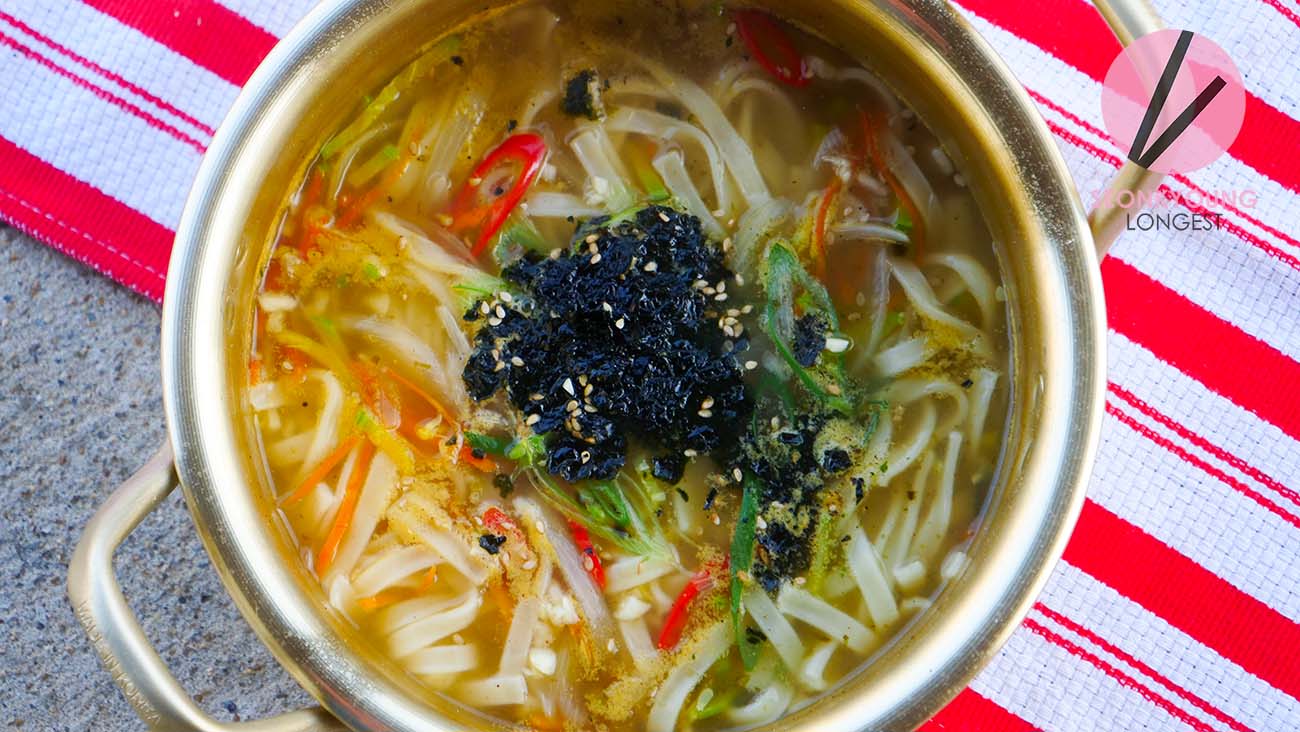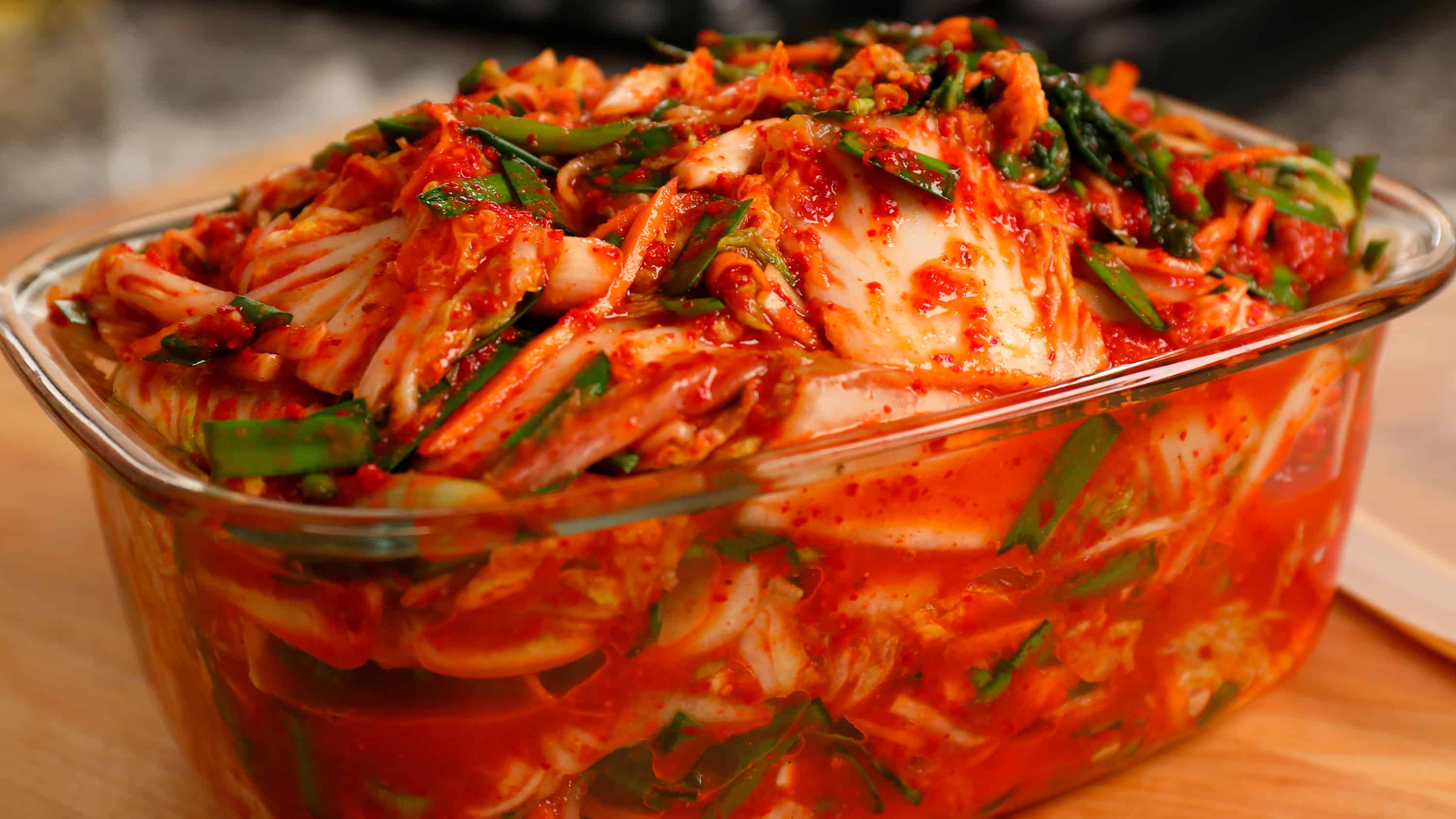Search This Blog
BE THE HOLIC OF KPOP WITH US.
Total Pageviews
what's new
- Get link
- X
- Other Apps
FOOD- holic🥫🥘🍲😋
 |
| Pic Credit- Korean kitchen |
kalguksu's recipe
But doesn’t mean it “has to” made from scratch, so
and Finely chop garlic.
Then season with light soy sauce, finally add garlic, green onion, and then red chili.
Add some black pepper to your taste, sprinkle with some sesame seeds and finish with crushed gim (Korean roasted & seasoned seaweed), now serve it with the great Korean texture and enjoy!!
 |
| Pic Credit-futuredish.com |
2- samgyeopsal 's recipe
| Pic Credit-wheretobaguio.com |
INGREDIENTS:
- 8 to 12 strips of Samgyeopsal pork belly
- 8 to 12 lettuce leaves (palm size)
- Bowl of steamed rice
- Salt & pepper dipping sauce
- Ssamjang sauce ( use ready-made or make the sauce at home. see the sauce recipe below)
For the Ssamjang Sauce:
- 3 Tbsp doenjang (Korean miso paste)
- 2 tbsp gochujang (Korean fermented chili paste)
- 1/2 tsp dark sesame oil
- 1 tsp caster sugar
- 1 tsp soy sauce
- 2 tsp toasted sesame seeds (optional)
- 1 tsp garlic, minced
- 1 tsp spring onions (optional)
- In a bowl, combine the doenjang, gochujang, and sugar and stir vigorously with a spoon until the sugar has dissolved. Add the sesame oil and stir to combine. Stir in optional ingredients as you see fit.
For the Salt & Pepper Dipping Sauce:
- 1 tsp salt
- 1 tsp black pepper
- 2 tsp dark sesame oil
- Add all the ingredients into a small sauce dish and stir until just combined.
note-Some of the ingredients may not be readily available in your kitchen pantry, so you may need to have a short trip to a Korean grocery store, but if in case you don't have the time to do so, you may do the shopping online. There are great Korean products there!
- marinate the pork belly (or sukiyaki, as long as the pork is thinly sliced into strips) using the Korean BBQ sauce preferably overnight for maximum absorption of the flavor, but you may just do so in 1 to 2 hours.
- Wash and dry lettuce leaves.
- Place a lettuce leaf in one hand.
- Add a small spoonful of rice.
- Dip the cooked Samgyeopsal into the salt & pepper dipping sauce and place it on top of the rice.
- Add a small amount of Ssamjang sauce.
 |
| Pic Credit-futuredish.com |
- Wrap into a parcel small enough to be eaten in a single bite.
3-japchae noodles recipe
cloves garlic, minced,
1 tsp.freshly grated ginger,
2 tbsp.low-sodium soy sauce,
1 tsp.mirin (optional),
2 tsp.sesame oil,
2 tsp.honey,
1/2 tsp.freshly ground black pepper,
8 oz.sirloin steak, thinly sliced.
large egg, plus 1 egg yolk,
Pinch of kosher salt, 1 tsp.canola oil
low-sodium soy sauce,
2 tsp.sesame oil,
1 tbsp.gochujang,
1clove garlic, grated,
Freshly ground black pepperKosher salt,
1(3.5-oz.) container shiitake mushrooms, thinly sliced (about 8 to 10 mushrooms),
4 c.packed baby spinach,
1 tbsp.canola oil
small red onion, thinly sliced,
1large carrot, julienned,
1green onion, thinly sliced, plus more for garnish
sweet potato starch noodles or glass noodles,
1 tbsp.sesame oil
honey,
1 tbsp.low-sodium soy sauce,
Toasted sesame seeds, for garnish4-kimchi (김치)
recipe- (for kimchi)
- 2 large Chinese Cabbages (Napa Cabbages)
- 230g rock salt, use 180g to start with Water.
for kimchi soup-
- 10 tablespoon of fish sauce or Shrimp sauce
- 10 tablespoon of red pepper powder
- 1 onion
- 4-5 cloves of garlic
- 1 oriental pear
- 1 tablespoon of salt
- 1/2 tablespoon of sugar
- a small touch of ginger
- 4 spring onion
how to make-
- Cut the cabbage lengthwise through the stem into quarters. Cut the cores from each piece. Cut each quarter crosswise into 2-inch-wide strips.
- Place the cabbage in a large bowl and sprinkle with the salt. Using your hands, massage the salt into the cabbage until it starts to soften a bit. Add enough water to cover the cabbage. Put a plate on top of the cabbage and weigh it down with something heavy, like a jar or can of beans. Let stand for 1 to 2 hours.
- Rinse the cabbage under cold water 3 times. Set aside to drain in a colander for 15 to 20 minutes. Meanwhile, make the spice paste.
- for making the spice paste Rinse and dry the bowl you used for salting. Add the garlic, ginger, sugar, and fish sauce, shrimp paste, or water and stir into a smooth paste. Stir in the gochugaru, using 1 tablespoon for mild and up to 5 tablespoons for spicy (I like about 3 1/2 tablespoons); set aside until the cabbage is ready.
- Gently squeeze any remaining water from the cabbage and add it to the spice paste. Add the radish and scallions.
- Using your hands, gently work the paste into the vegetables until they are thoroughly coated. The gloves are optional here but highly recommended to protect your hands from stings, stains, and smells.
- Pack the kimchi into a 1-quart jar. Press down on the kimchi until the brine (the liquid that comes out) rises to cover the vegetables, leaving at least 1 inch of space at the top. Seal the jar.
- Place a bowl or plate under the jar to help catch any overflow. Let the jar stand at cool room temperature, out of direct sunlight, for 1 to 5 days. You may see bubbles inside the jar and brine may seep out of the lid.
- Check the kimchi once a day, opening the jar and pressing down on the vegetables with a clean finger or spoon to keep them submerged under the brine. (This also releases gases produced during fermentation.) Taste a little at this point, too! When the kimchi tastes ripe enough for your liking, transfer the jar to the refrigerator. You may eat it right away, but it's best after another week or two
- Salt: Use salt that is free of iodine and anti-caking agents, which can inhibit fermentation.
- Water: Chlorinated water can inhibit fermentation, so use spring, distilled, or filtered water if you can.
- Seafood flavor and vegetarian alternatives: Seafood gives kimchi an umami flavor. Different regions and families may use fish sauce, salted shrimp paste, oysters, and other seafood. Use about 2 tablespoons of fish sauce, salted shrimp paste, or a combination of the two. For vegetarian kimchi, I like using 3/4 teaspoon kelp powder mixed with 3 tablespoons water, or simply 3 tablespoons of water.
- Storage: Kimchi can be refrigerated for up to a few months. Use clean utensils each time to extract the kimchi from the jar.
5-Doenjang jjigae (된장찌개)
recipe-
- 3 ounces pork (preferably fatty pork) shoulder, or loin (or use beef, clams, or shrimp if desired)
directions-
- Cut the tofu and zucchini into about 1-inch cubes. Cut the radish into thin small squares. Thinly slice the onion and pepper. Roughly chop the scallion. Slice the meat into thin strips.
- Preheat a small pot with a little bit of oil. Sauté the meat, soybean paste, and chili pepper flakes, over medium heat for 3 to 4 minutes.
- Add the water (or anchovy broth) and stir well to dissolve the soybean paste. Add the radish. Boil over medium-high heat for 4 to 5 minutes.
- Add the onion, garlic, tofu, zucchini, and chili pepper. Boil for an additional 5 to 6 minutes. Throw in the scallion and add the vinegar with a minute or two remainings.
- Serve with rice while it is still bubbling from the heat.
- Get link
- X
- Other Apps
our tops
From Daegu Dreamer to Global Icon - Exploring the Phenomenon of BTS's Multifaceted Star 'Kim Taehyung'
- Get link
- X
- Other Apps
- Get link
- X
- Other Apps










Comments
Post a Comment